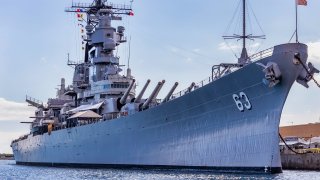I Was The Last Person to Fire a Battleship’s Massive Guns. These Warship Have Much To Teach Us
Justly or not, carriers, cruisers, destroyers, and submarines don’t seem to make the cultural grade compared to battleships. Maybe naval architects should start factoring style into their design efforts.
What accounts for the lasting allure of Iowa-class battleships?
These are ships of war built in the 1940s to fight Axis enemies that no longer exist.
We are constantly told that the aircraft carrier doomed the battleship to obsolescence at Pearl Harbor on December 7, 1941.
The Iowa-class briefly found new life during the 1980s and 1990s, including stints of combat duty, but they have slumbered in retirement for over three decades now.
All are museum ships, two in the Atlantic, two in the Pacific. They are yesterday’s news.
What the Iowa-Class Battleships Can Teach Us
And yet these are not mere relics in steel. They still have something to teach us about how to build a fleet able to win the affection of the American people.
Why the Iowa-class still excites public interest, then, constitutes a question of present-day importance.
Naval magnates fret ceaselessly about how to get ordinary folk to rediscover their love affair with their navy and to rededicate themselves to the cause of sea power at a time when storm clouds are gathering in the Western Pacific.
A society that gazes out to sea—and remembers how past generations dealt with seaborne strife—is a society predisposed to invest in a battle fleet of proportions and capability befitting an oceangoing superpower. How can the leadership cultivate such a society?
If shipwrights could consciously devise ships to fire enthusiasm as well as win battles, they could ease the challenge of reconnecting with the populace. The question is how.
History, storytelling, and visual appeal could fuse into a compelling formula for popular outreach. First, history. The mystique around the Iowa-class stems in part from nostalgia for their illustrious past.
The four battlewagons compiled respectable records as fighting ships in World War II, chiefly in the Pacific. But that can’t explain their fame in full. As new-construction warships, they were relative latecomers to the maelstrom.
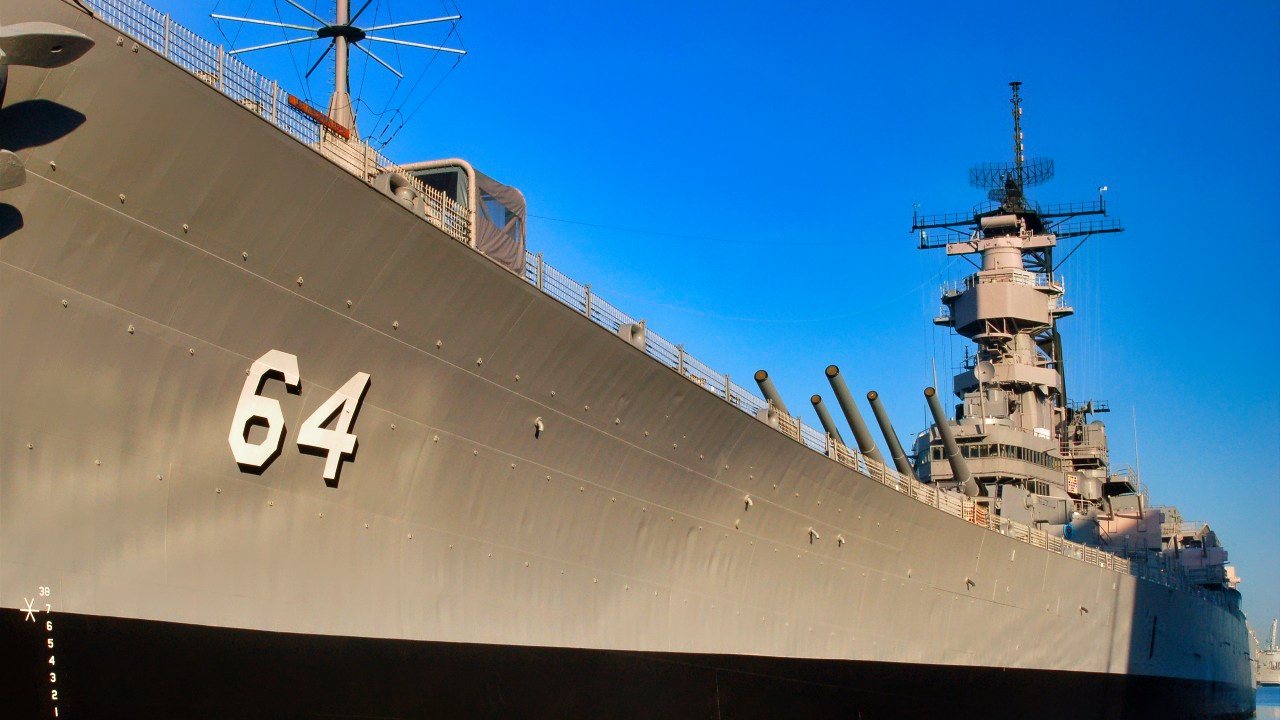
I was lucky to serve on one of these warships during the Persian Gulf War, the battleship Wisconsin. She only reached the Pacific theater in late 1944. USS Missouri, the most iconic in the class owing to images from the Tokyo Bay surrender ceremony, didn’t join the fighting until early 1945, when the war’s endgame was coming into view.
So a simple ledger of achievements cannot explain the Iowas’ legacy.
In fact, the Iowa class suffers from a history deficit relative to other World War II veterans. With service lives spanning the entire war, other battleships accomplished as much as—and in many cases more than—Iowa, New Jersey, Missouri, and Wisconsin, which make up the four-ship class. Our local battlewagon—USS Massachusetts, a hop, skip, and jump from here in Fall River, MA—earned combat laurels in both the Atlantic and Pacific. In late 1942 the battleship Washington triumphed in an epic clash off Guadalcanal, during the Solomon Islands campaign. The battle in “Ironbottom Sound,” an infamous killing ground for surface vessels, convinced Japanese commanders to abandon their struggle for Guadalcanal, and made way for an American counteroffensive across the South Pacific to rumble to life. Battleships that had been sunk at Pearl Harbor, raised, and returned to duty exacted vengeance at Surigao Strait in late 1944, demolishing an Imperial Japanese Navy battleship fleet in history’s last significant surface action.
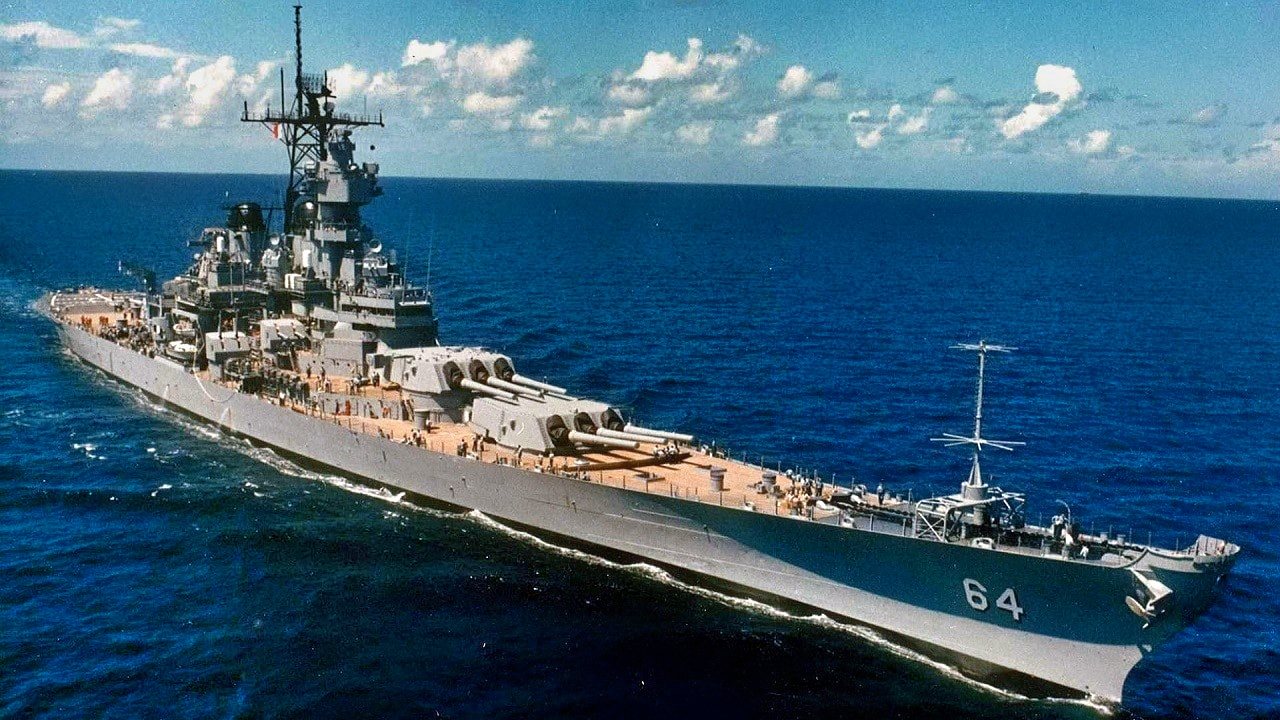
This is drama.
And that’s leaving aside feats recorded by other ship types. For sheer spectacle it’s tough to match the life of the carrier USS Enterprise, the most decorated U.S. Navy vessel of World War II. Enterprise amassed twenty battle stars, having stood at the forefront of such seismic engagements as the Battle of Midway (1942). (For comparison: New Jersey accumulated the most among the Iowa class, with nine.) The claim that naval air power rendered battleships obsolete is false. They rendered estimable service. What is certainly true is that carrier aviation demoted battleships, including the Iowa class, from their place at the center of the battle fleet. That being the case, you would expect Enterprise and other flattops to have demoted battleships to also-ran standing in popular memory as well. To everyman they should be historical curiosities and little more.
But no. Battleships’ renown endures. History comprises part of the Iowas’ legendary status, but there’s more to it than that.
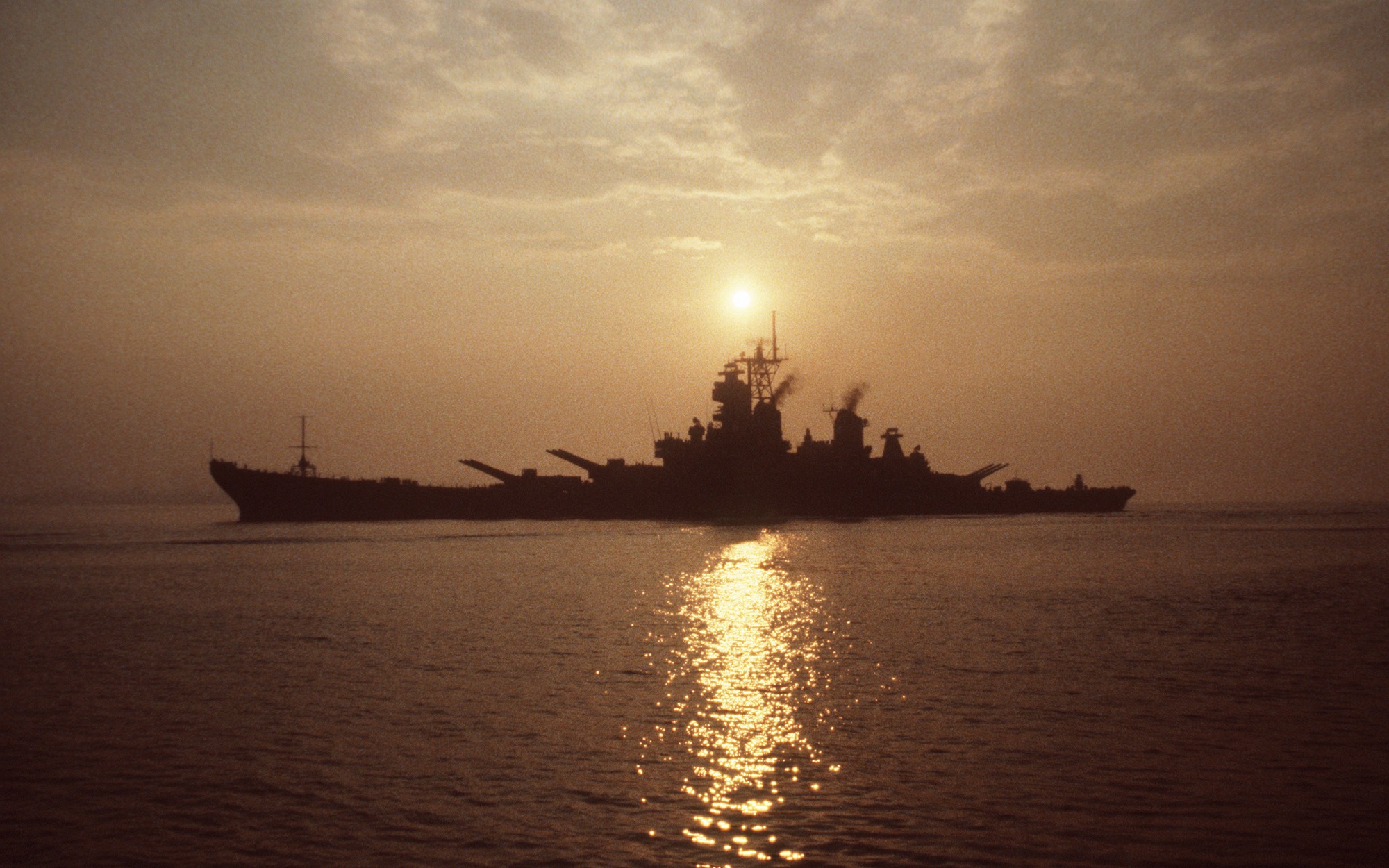
Second, storytelling. The morphing nature of naval warfare helps explain the Iowas’ longevity in the public imagination. These days warships deal out precision firepower across long distances. Their hitting power resides mainly in aircraft and guided missiles. They seldom sight the enemy visually. Dreadnoughts were brawlers by contrast. They were apex predators back in the days when gunnery decided the outcomes of high-seas battles. They were built to dish out and take punishment against foes that were generally in plain view. It may be that something about putting yourself in harm’s way at close quarters resonates with Americans’ sporting instincts—witness the everlasting popularity of boxing, wrestling, or mixed martial arts. Mixing it up in close combat makes for better tales than sending out the air wing or a volley of missiles to assault hostile forces over the horizon and out of sight.
Close action is personal. And people respond to stories about people in trying circumstances. The results of a surface engagement are concrete and instantly intelligible—you’re hit, or you’re exhilarated at being shot at without result. Its human dimension is palpable. The story of a surface action is about ship crews. By contrast, long-distance air or missile engagements are remote and abstract except for the aviators actually doing the fighting. That’s why enthusiasm for naval aviation mainly affixes to aviators and their aircraft—not to the carrier or its crew. One imagines Top Gun: Maverick would have been a box-office dud had it been set mostly on board the carrier rather than with Maverick’s squadron swooping through the sky under fire.
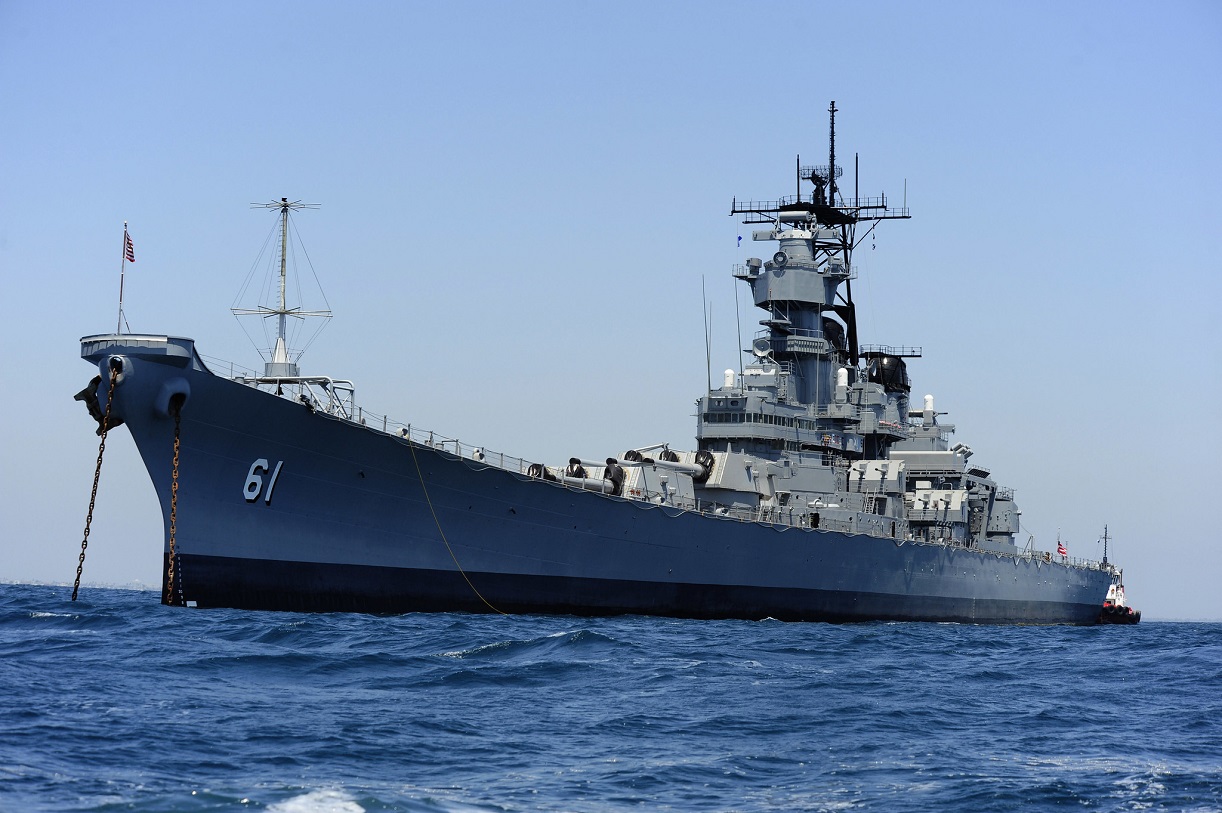
A historical quirk also helps battleship enthusiasts weave a compelling narrative about the Iowa-class. The Iowa-class certainly represented the zenith of American battleship design, and it has a strong claim to be the finest of the type ever built by any navy. Yes, the Imperial Japanese Navy superdreadnoughts Yamato and Musashi sported larger main guns able to loft bigger projectiles longer distances. But size is not everything. A lively debate has raged for decades about whether an Iowa or a Yamato would have prevailed in a gunfight, and for good reason. My bet is on the relatively lightweight American dreadnought because the Yamato class was inferior to the Iowa class in fire control. Maximum firing range matters little when your long-range fire is imprecise. You miss.
Maximum effective range is what counts. In all likelihood an Iowa-class vessel boasting accurate sensors and fire control would have closed the distance and scored the first hits in a one-on-one gunnery duel. In the process it would have set itself up for ultimate victory.
Being the GOAT at something is a good way to cement your place in popular lore. People love a winner! Nor can some future class of battleships ever eclipse the Iowa class. Its GOAT status is forever because no one builds dreadnoughts any more and no one is likely to start. That’s the benefit of being the greatest and the last. Meanwhile ship types that remain in service get superseded all the time. Essex-class fleet carriers, which anchored the World War II fleet, yielded their place to supercarriers by the 1950s. Conventionally propelled supercarriers gave way to nuclear-powered flattops by the 1970s. And now the venerable Nimitz-class nuclear-powered carriers stand to be outclassed by Ford-class flattops now entering service. Or so the Ford’s proponents say.
While USS Enterprise deserves acclaim as the U.S. Navy’s greatest fighting ship of World War II, in other words, neither it nor any other historic aircraft carrier can be the GOAT. The same goes for cruisers, destroyers, submarines, and any other ship type that’s still being constructed. Battleships are another matter. The Iowas’ victory is final.
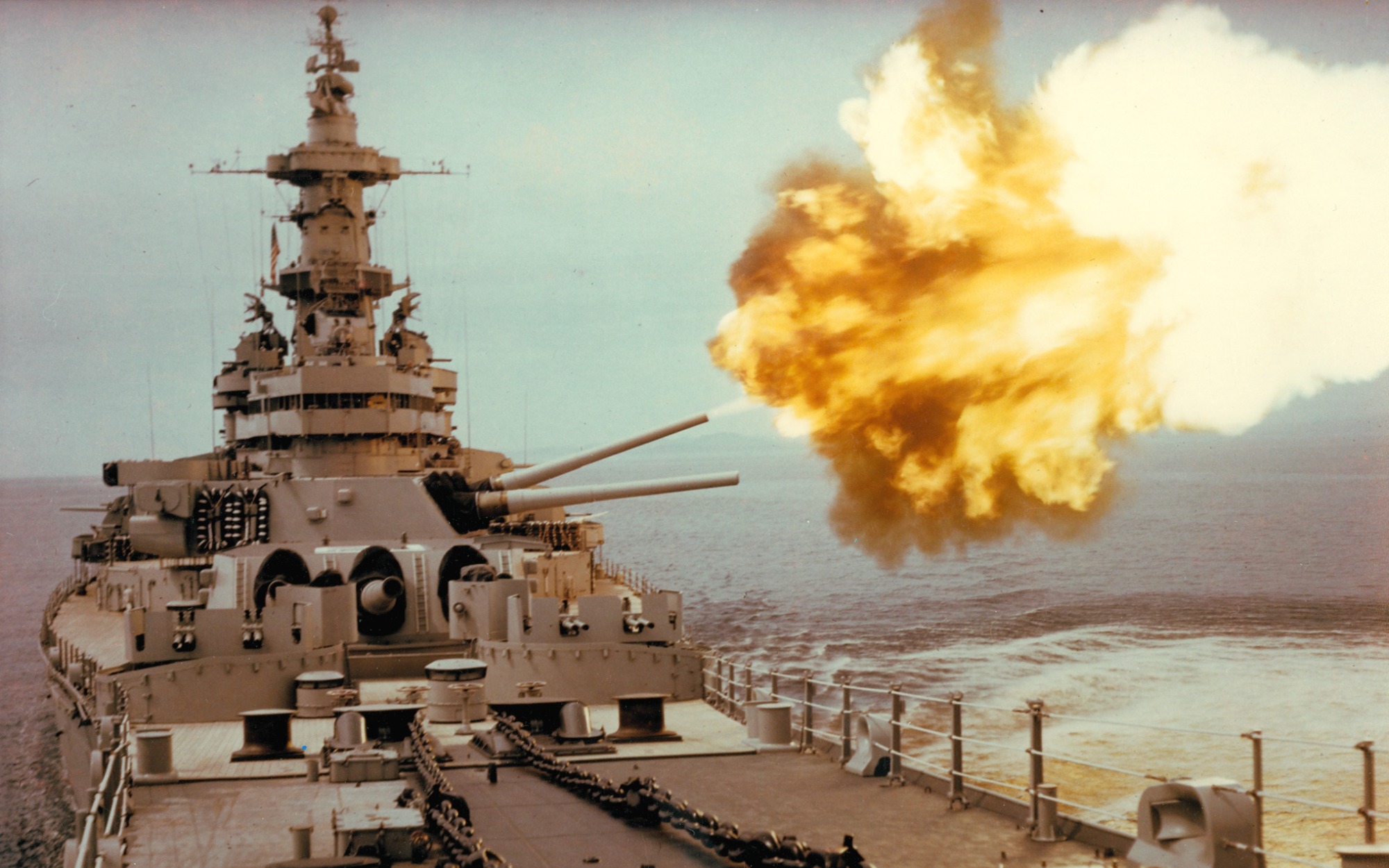
And lastly, there’s the matter of style. Combat efficacy comes first in ship design. It must. But at the same time ships are political implements, and the look of a ship matters for political reasons. Edward Luttwak points out that Soviet capital ships made a sensation with nonspecialists during the Cold War. They exuded brawn, with sensors, weapons, and fittings jutting out everywhere on the main deck and superstructure. American warships featured missile launchers, to be sure, but their missiles resided in magazines deep within the ship and out of view. And by the late Cold War, Aegis cruisers—the U.S. Navy’s prime surface combatants—carried their missiles in vertical-launch silos, which look like flat panels on the main deck. Launchers disappeared altogether, along with whatever visual impact they had. Similarly, cruisers’ phased-array radars, the core of the Aegis combat system, looked like flat panels mounted on the boxy superstructure. Again, the gee-whiz factor was nil. Cruisers were the class of the world’s preeminent surface fleet, but they were outwardly unimpressive.


